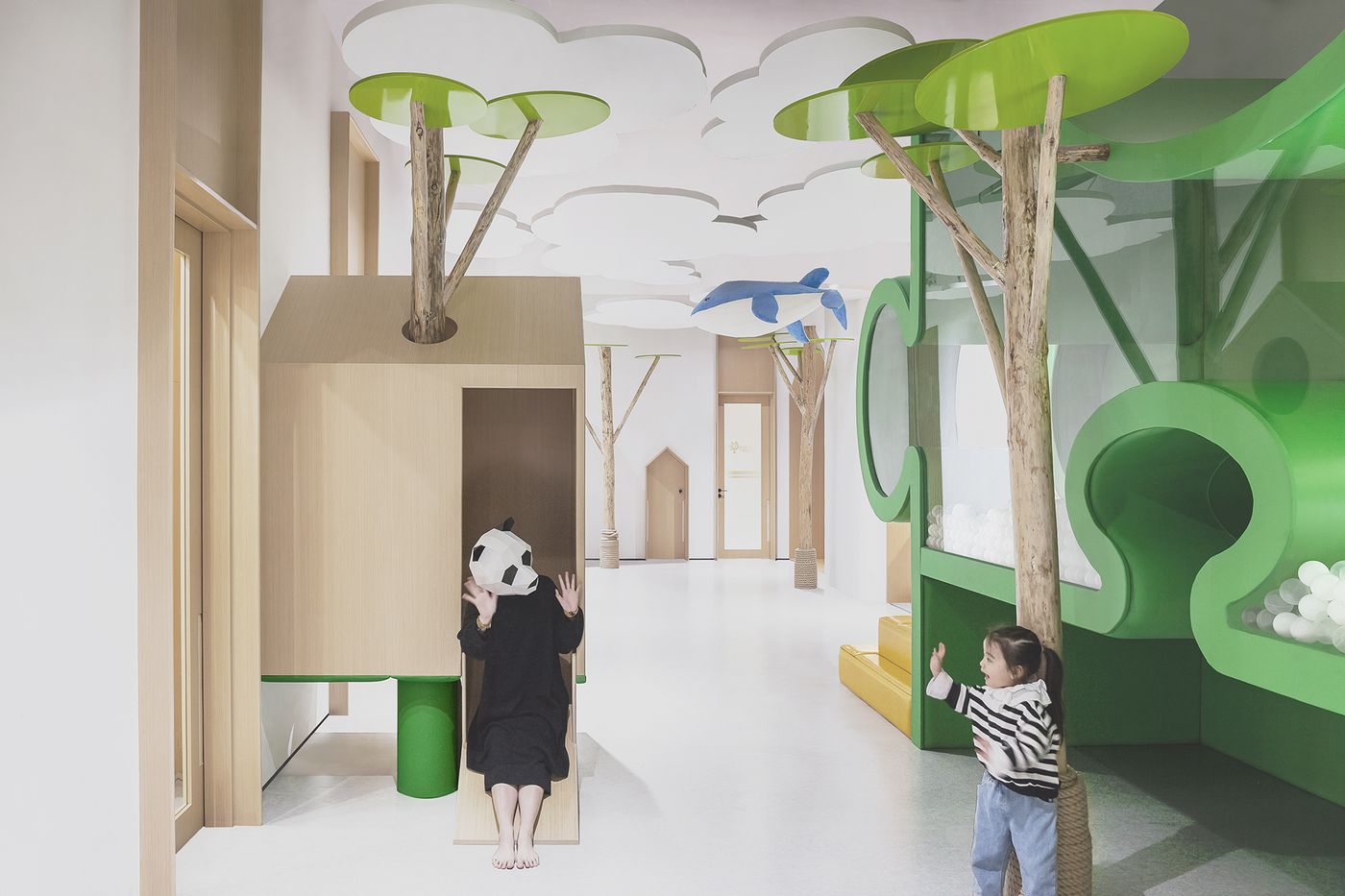
CUN PANDA Designs a Kindergarten in China as an Enchanted Forest
Words by Yatzer
Location
Fujian Sheng, China
CUN PANDA Designs a Kindergarten in China as an Enchanted Forest
Words by Yatzer
Fujian Sheng, China
Fujian Sheng, China
Location
In the public’s imagination, designing spaces for small children is synonymous with merry iconography and bubbly aesthetics, but for wise designers, at the core of such projects is the question of how to promote learning through design. A stellar example of such an informative approach is POAN Educational Institution in Fujian, China, the work of local design practice CUN PANDA. Conceived as a forest-like wonderland where children can cultivate their imagination and grow their independence, the kindergarten’s playful sensibility belies a thoughtful design language that reflects as well as bolsters a preschool educational system that values and seeks to promote self-confidence and self-expression.

Photo by GL YANG.

Photo by GL YANG.
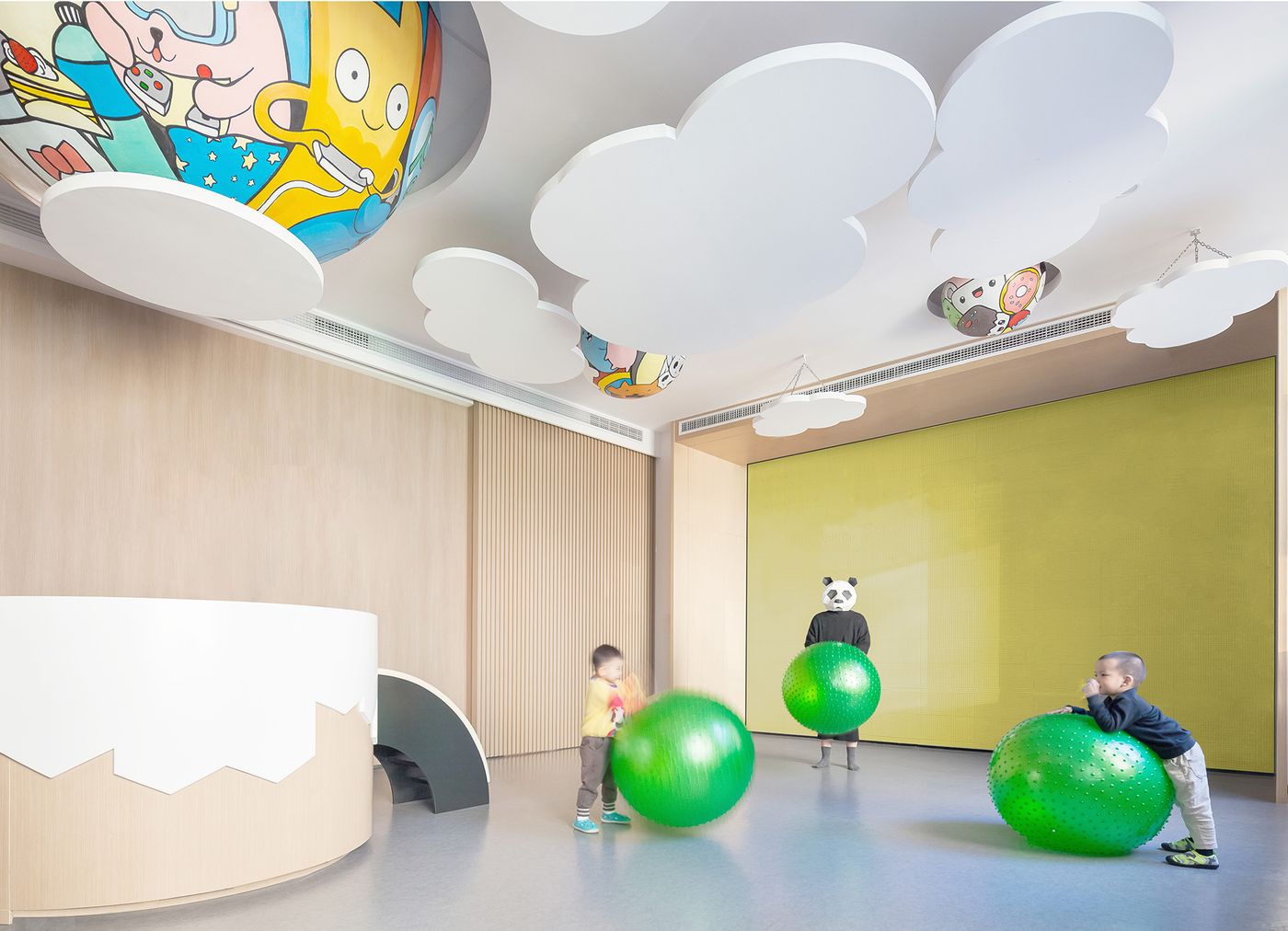
Photo by GL YANG.
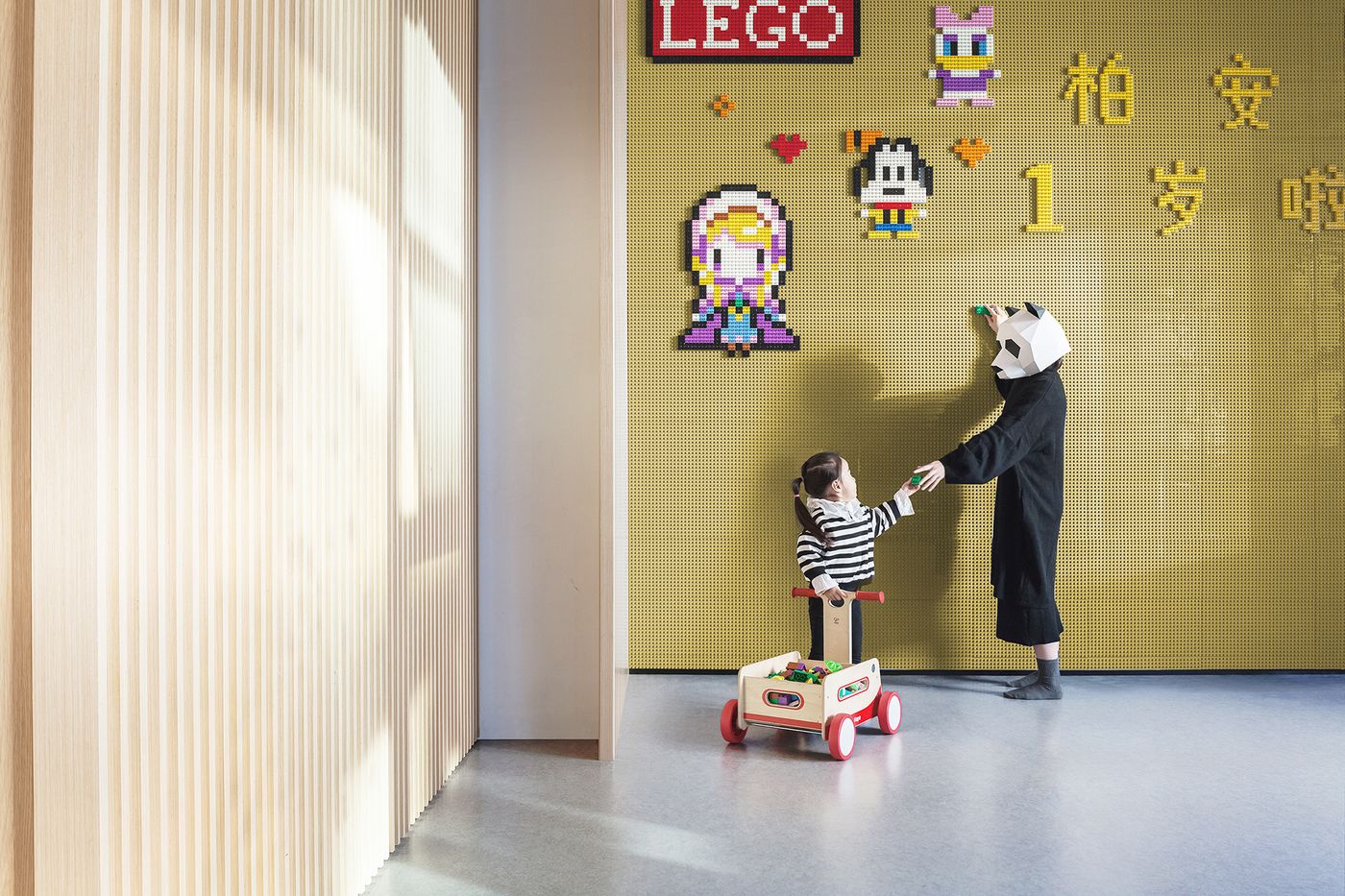
Photo by GL YANG.
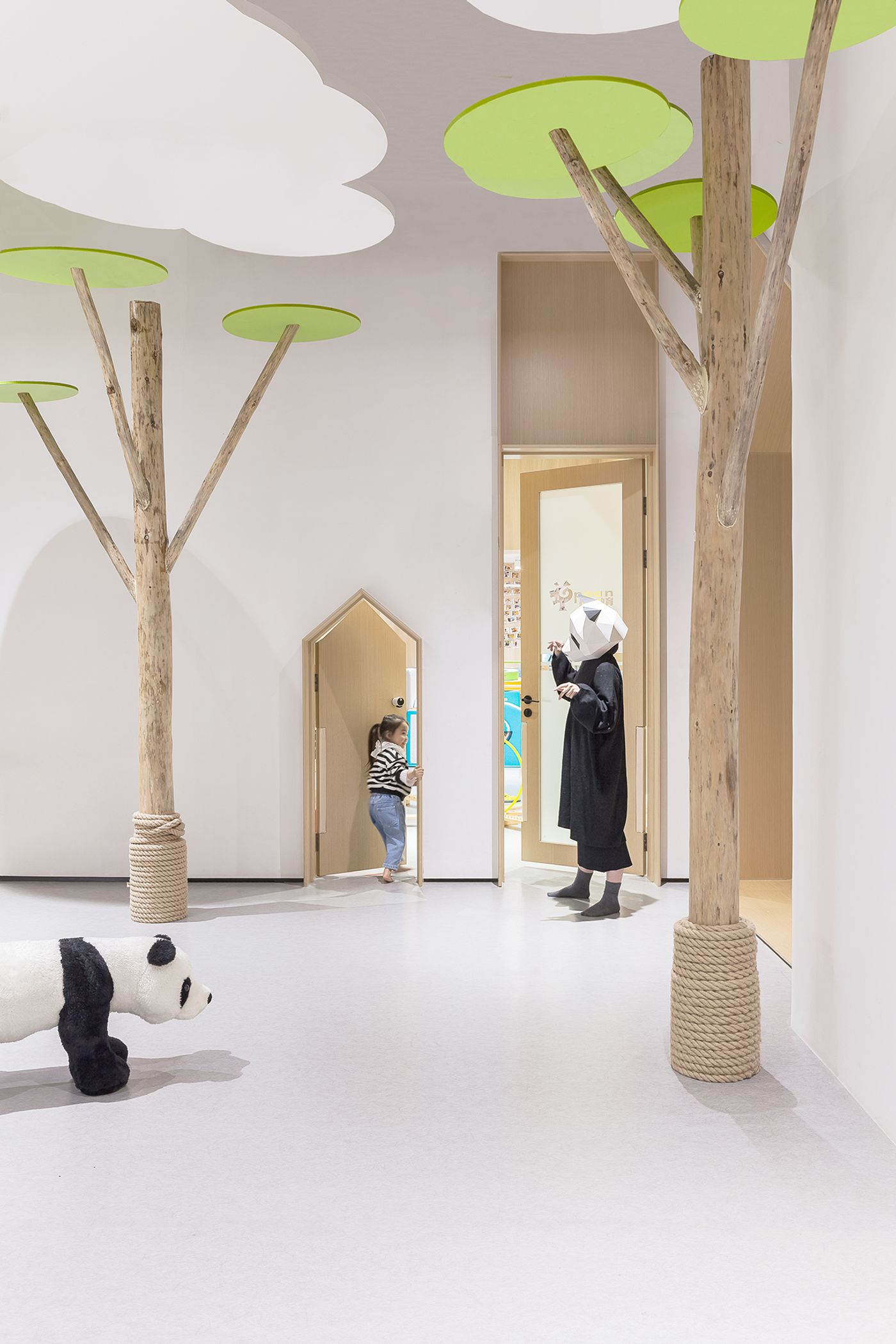
Photo by GL YANG.
Inspired by the idea of an ‘infant’ forest itself, with saplings growing, lead designer and CUN PANDA’s co-founder Lin Jiacheng — an acclaimed interior designer affectionately known as "panda daddy" hence also the practice’s name — combined a palette of green and natural oak hues with tree-like constructions and cloud-shaped ceiling panels to playfully create an inspiring environment, worlds apart from the business district the building is located in. The result is a space which children want to explore; in fact, exploration is a key concept behind CUN PANDA’s approach since it’s strongly with a willingness to learn which is a core tenet of POAN’s educational philosophy. Learning in other words, is perceived as a journey of exploration rather indoctrination; as the hot air balloon hovering above the reception desk alludes to.
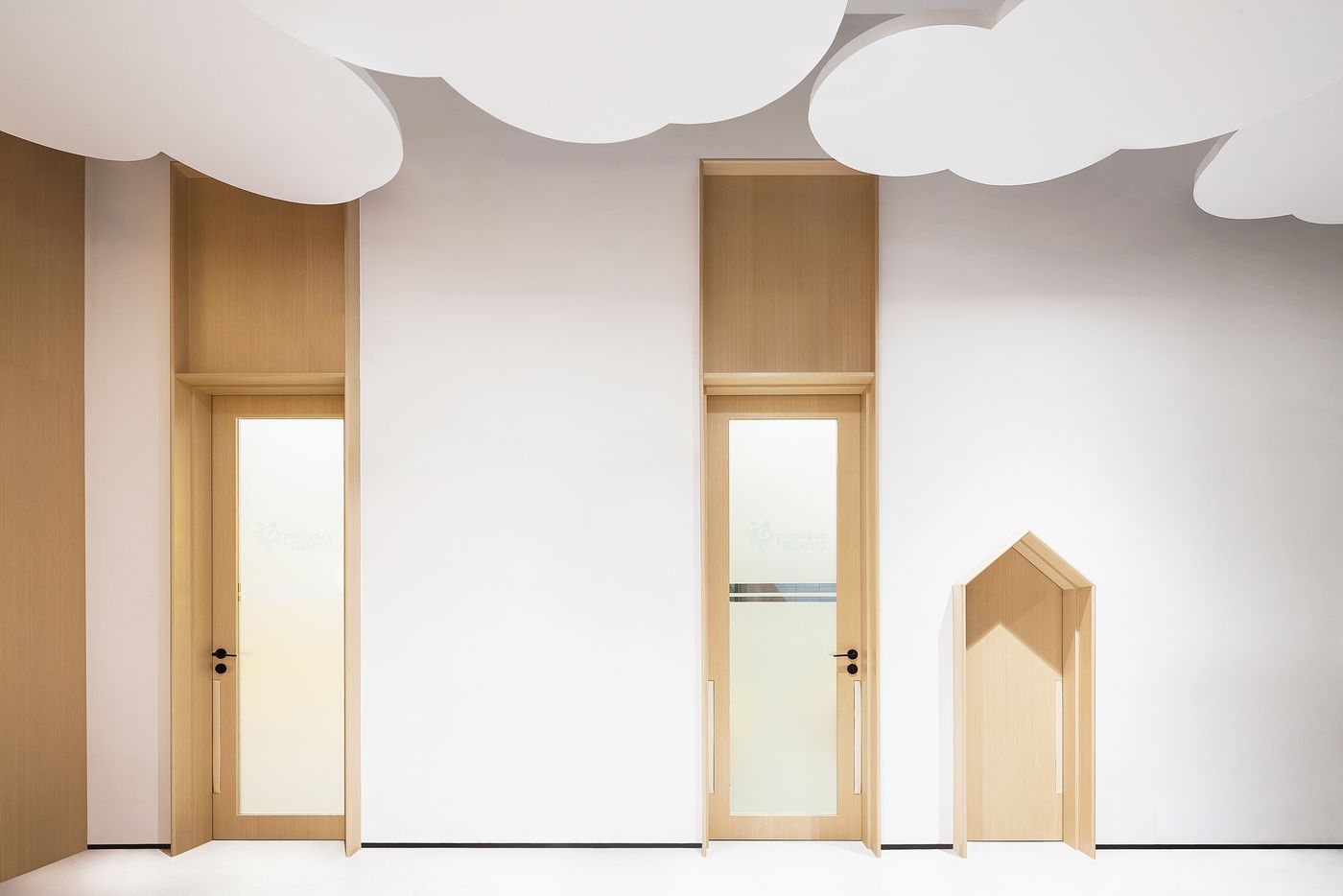
Photo by GL YANG.

Photo by GL YANG.
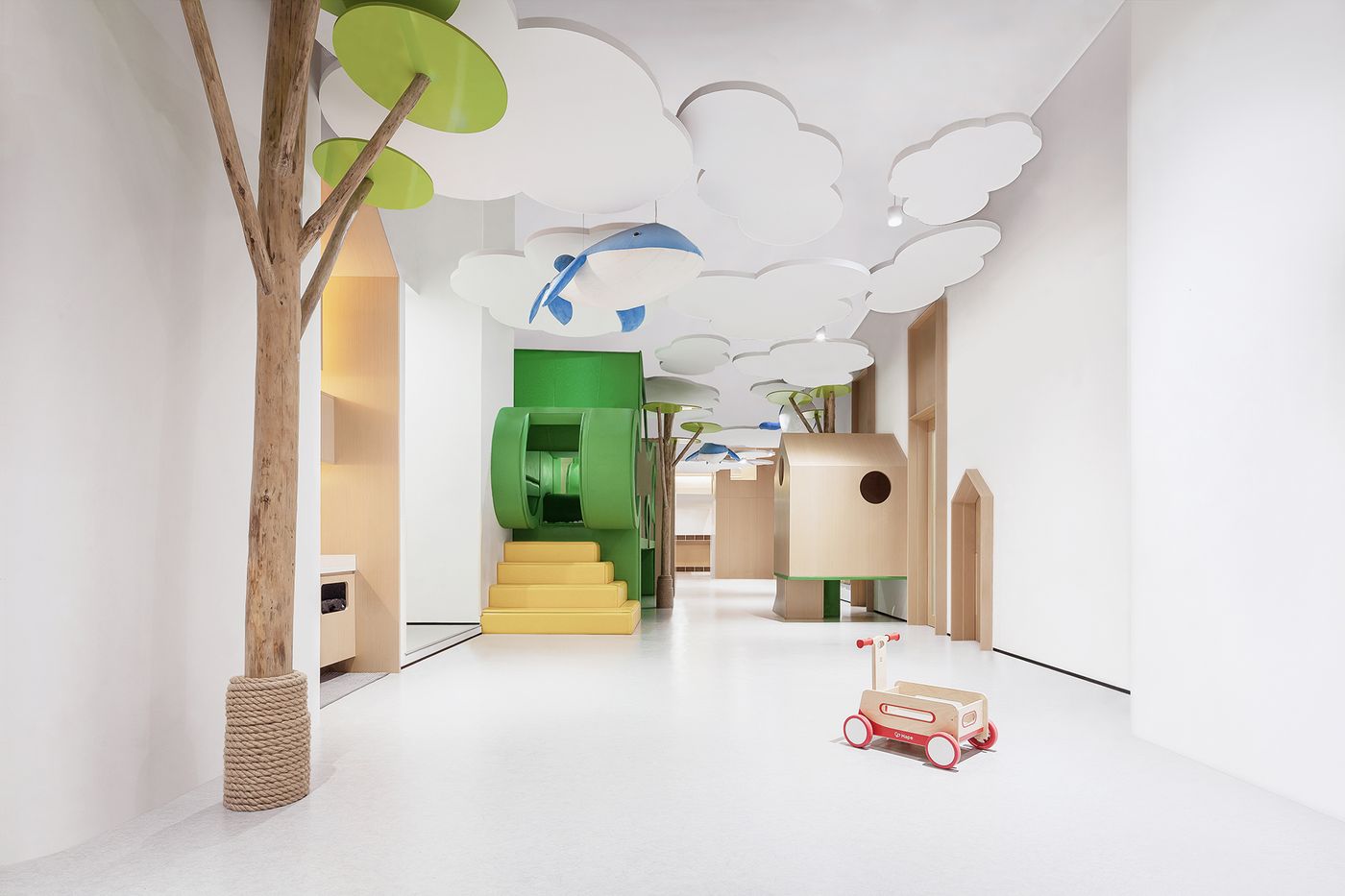
Photo by GL YANG.
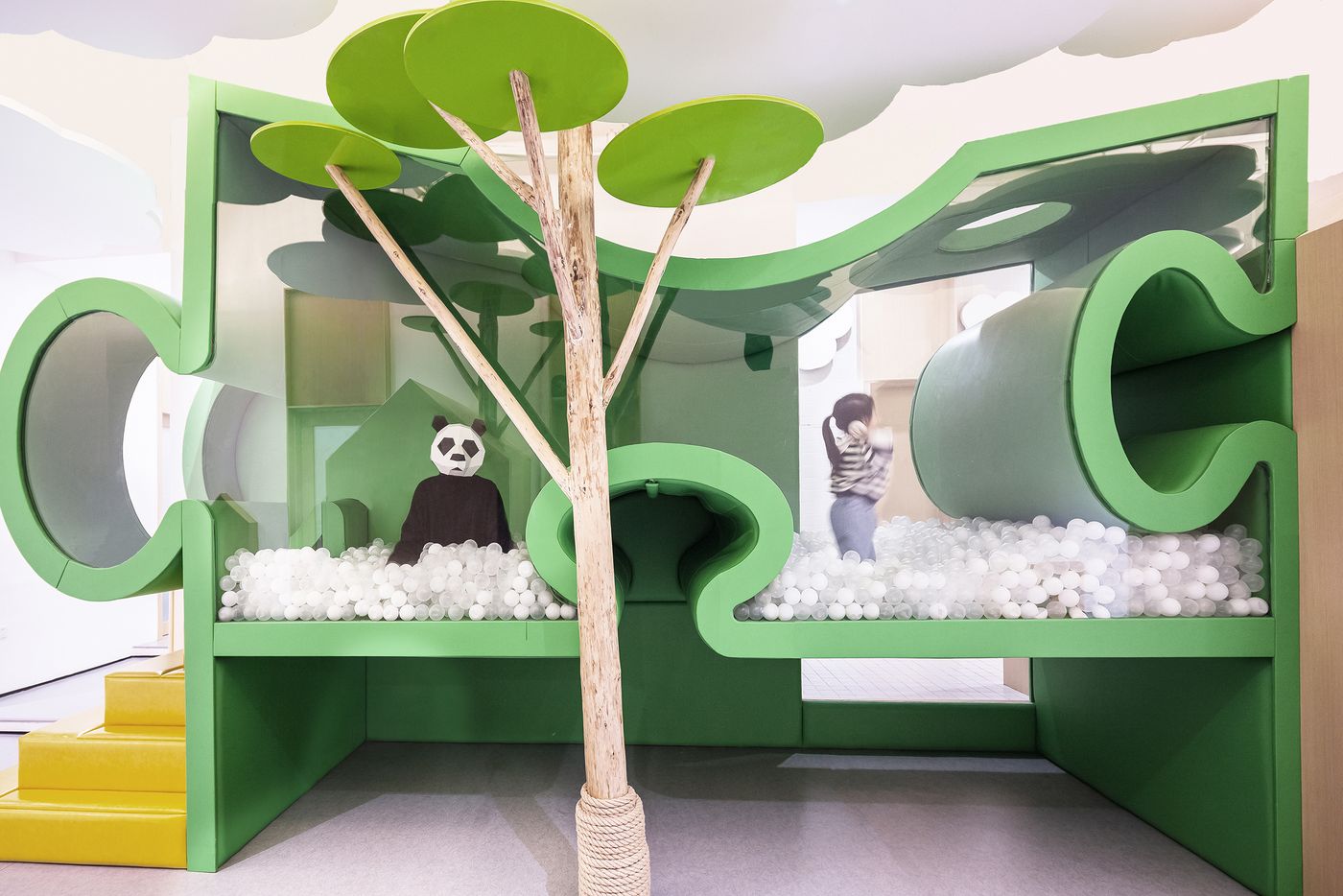
Photo by GL YANG.
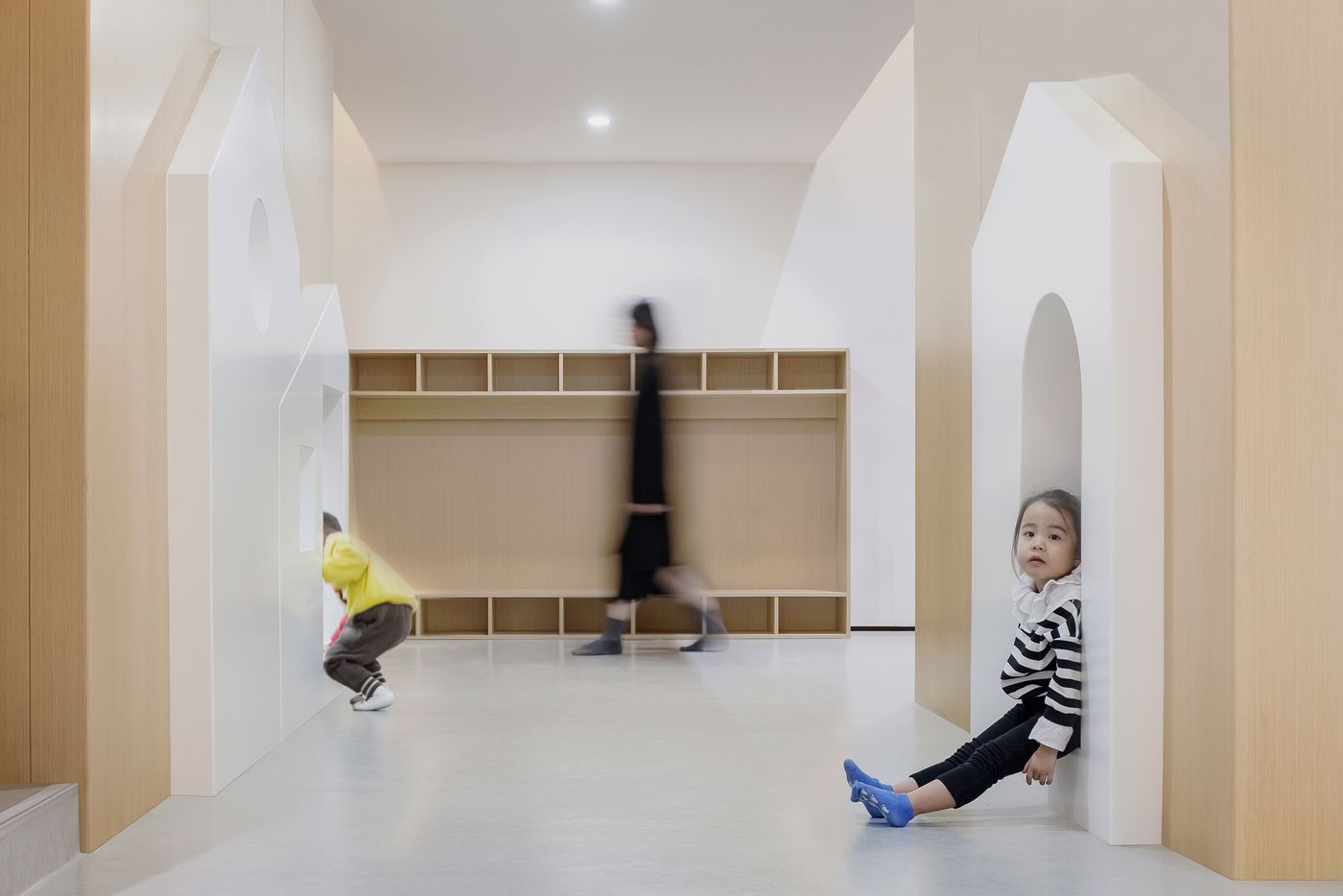
Photo by GL YANG.
Complementing the forest theme, a series of house-shaped volumes and apertures of varying sizes populate the interiors. Functioning as secret passageways, breakout spaces, hiding places, children-only door entries and multi-purpose niches, they aim to further instill in children a desire for exploration, as well as heighten the sense of security that the concept of home embodies. The unorthodox configuration, which upends the typical corridor-centred floor plan with its multiple connections between classrooms, blurs the line between educational and recreational spaces while encouraging an interactive experience between children and teachers.
The designers have given great attention to detail: from anti-pinch doors and diffuse lighting to protect children’s eyesight, to soft flooring that allows children to sit with their friends as they please, and irregular-shaped storage cabinets that marry fun with function, this kindergarten is a healthy and happy environment for children to grow up and evolve in.
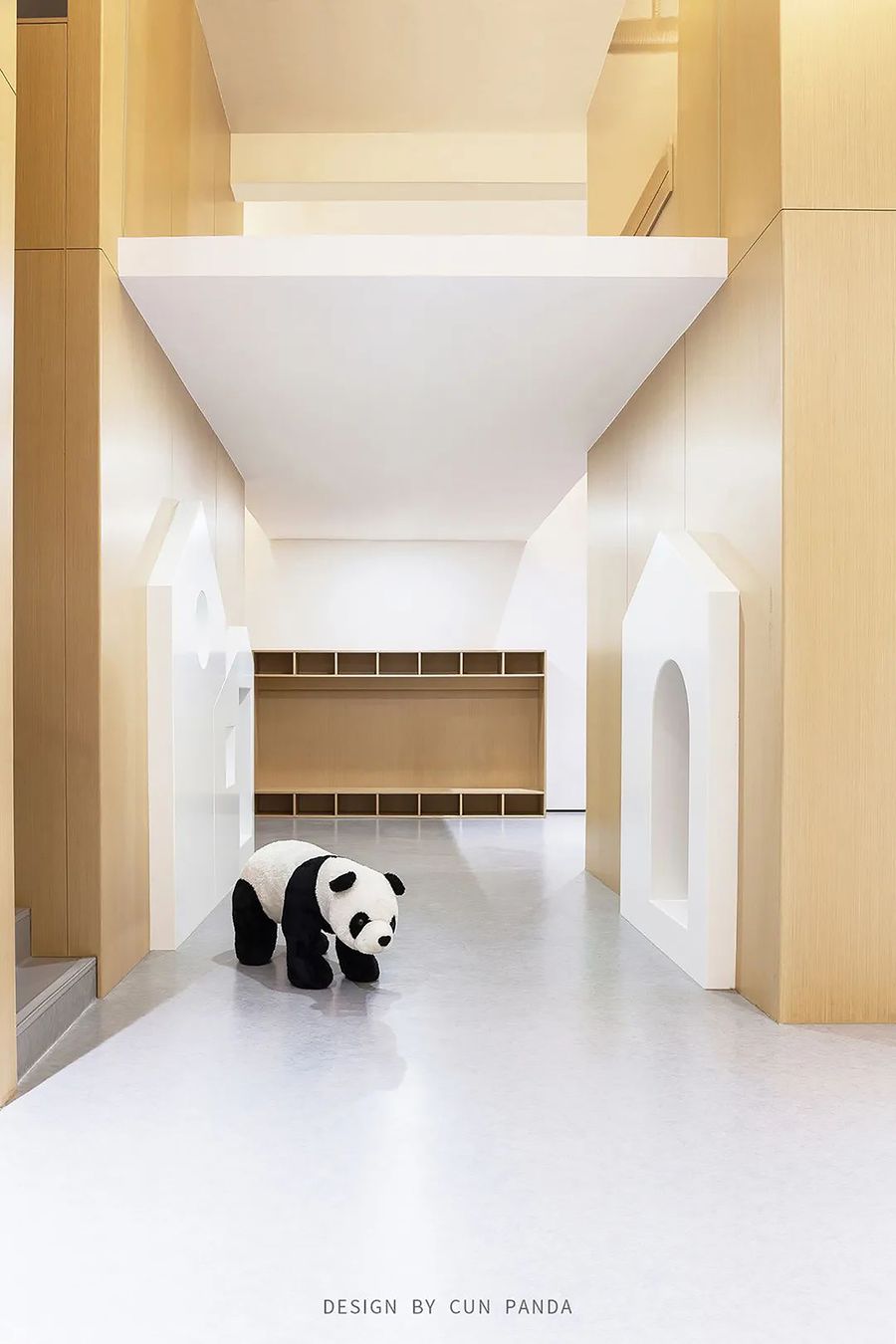
Photo by GL YANG.
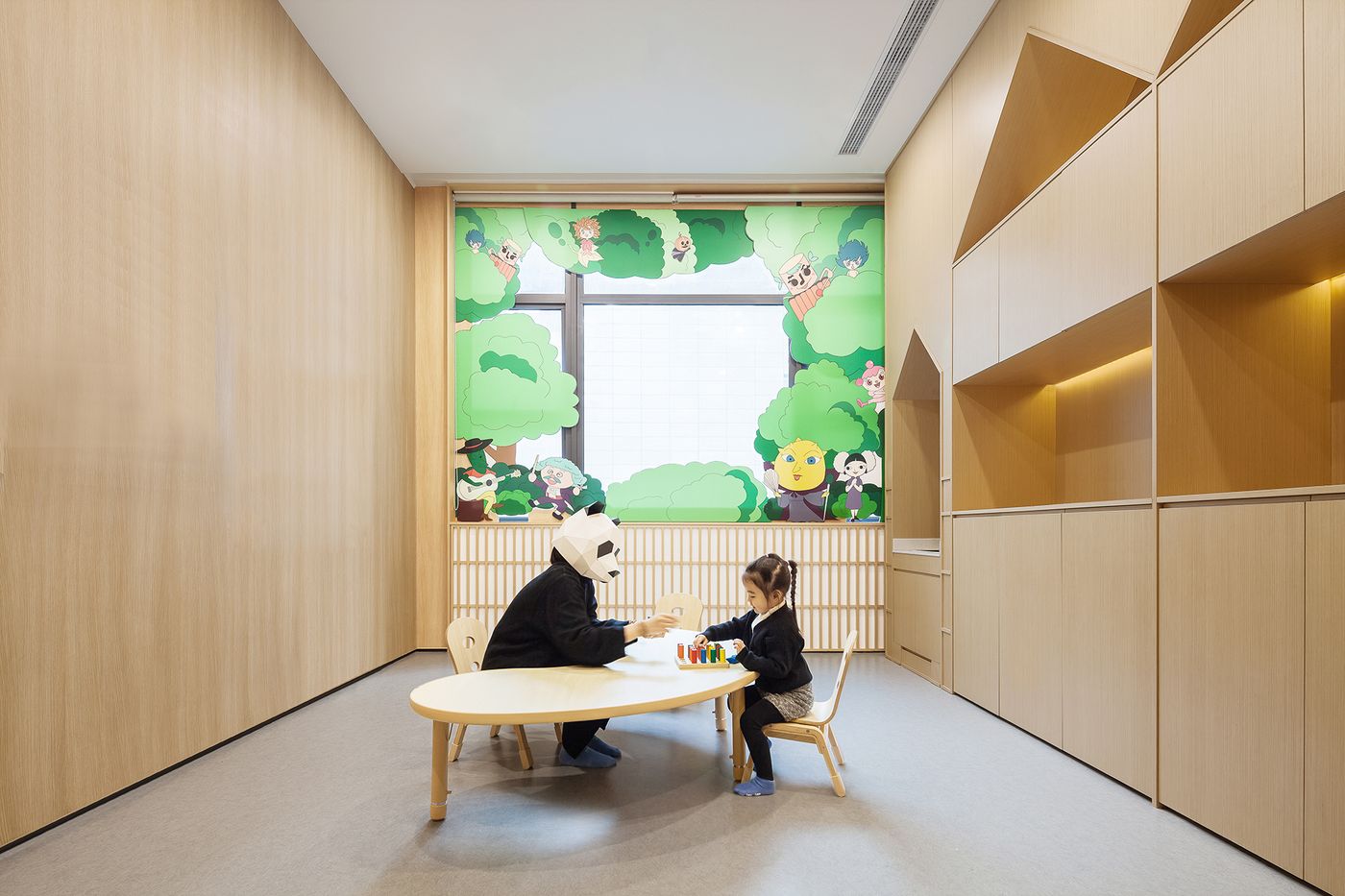
Photo by GL YANG.
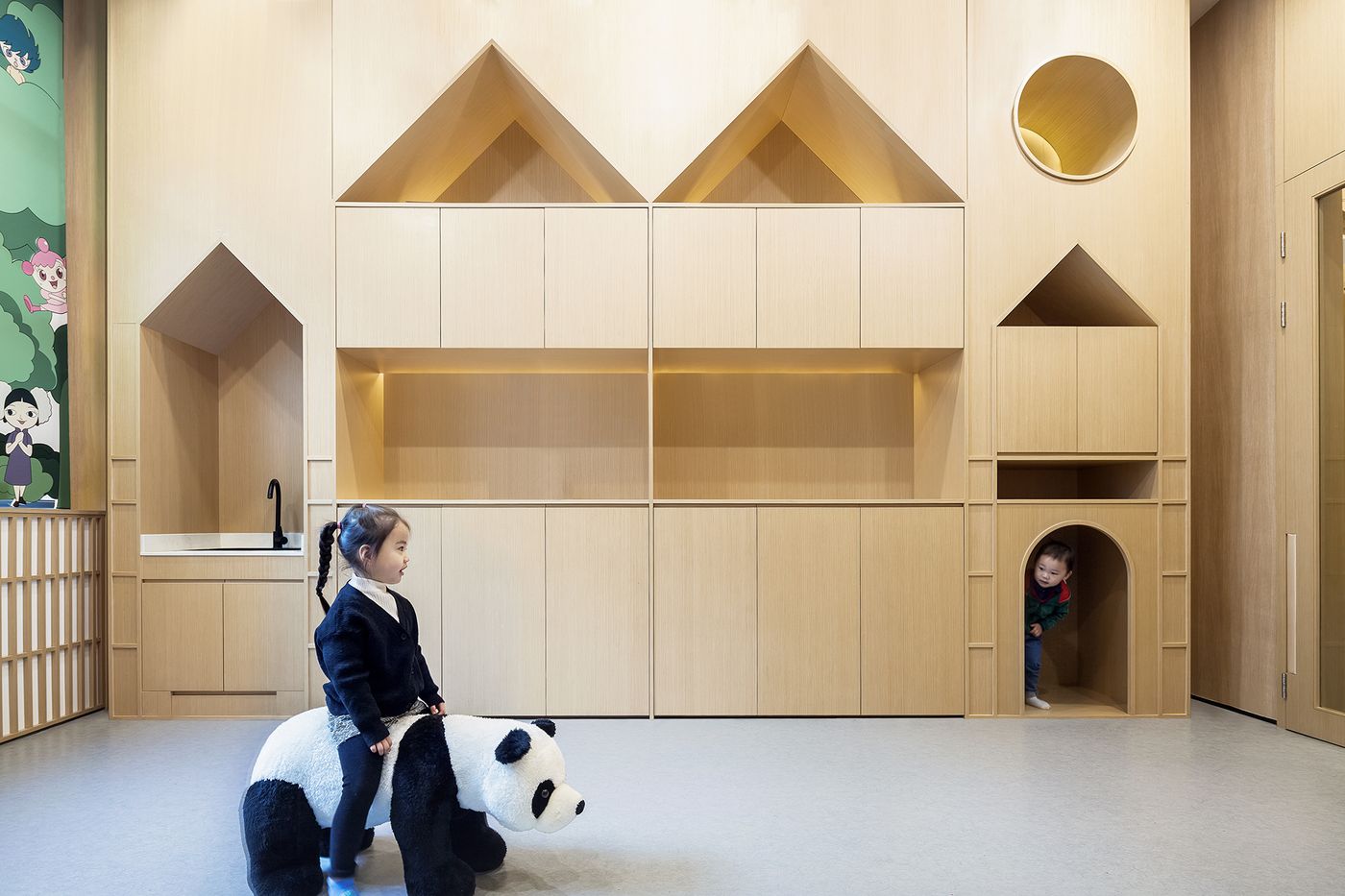
Photo by GL YANG.
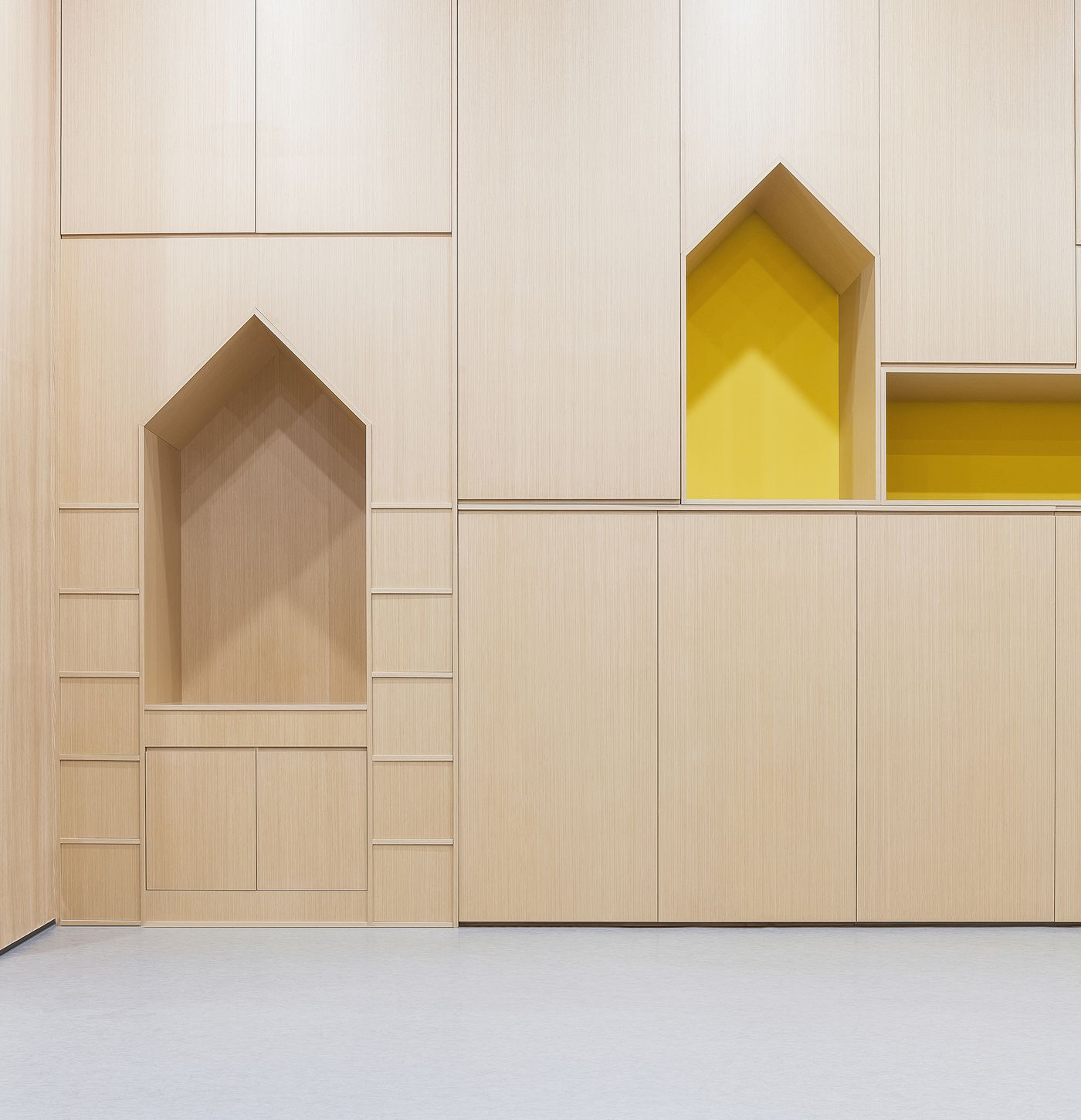
Photo by GL YANG.
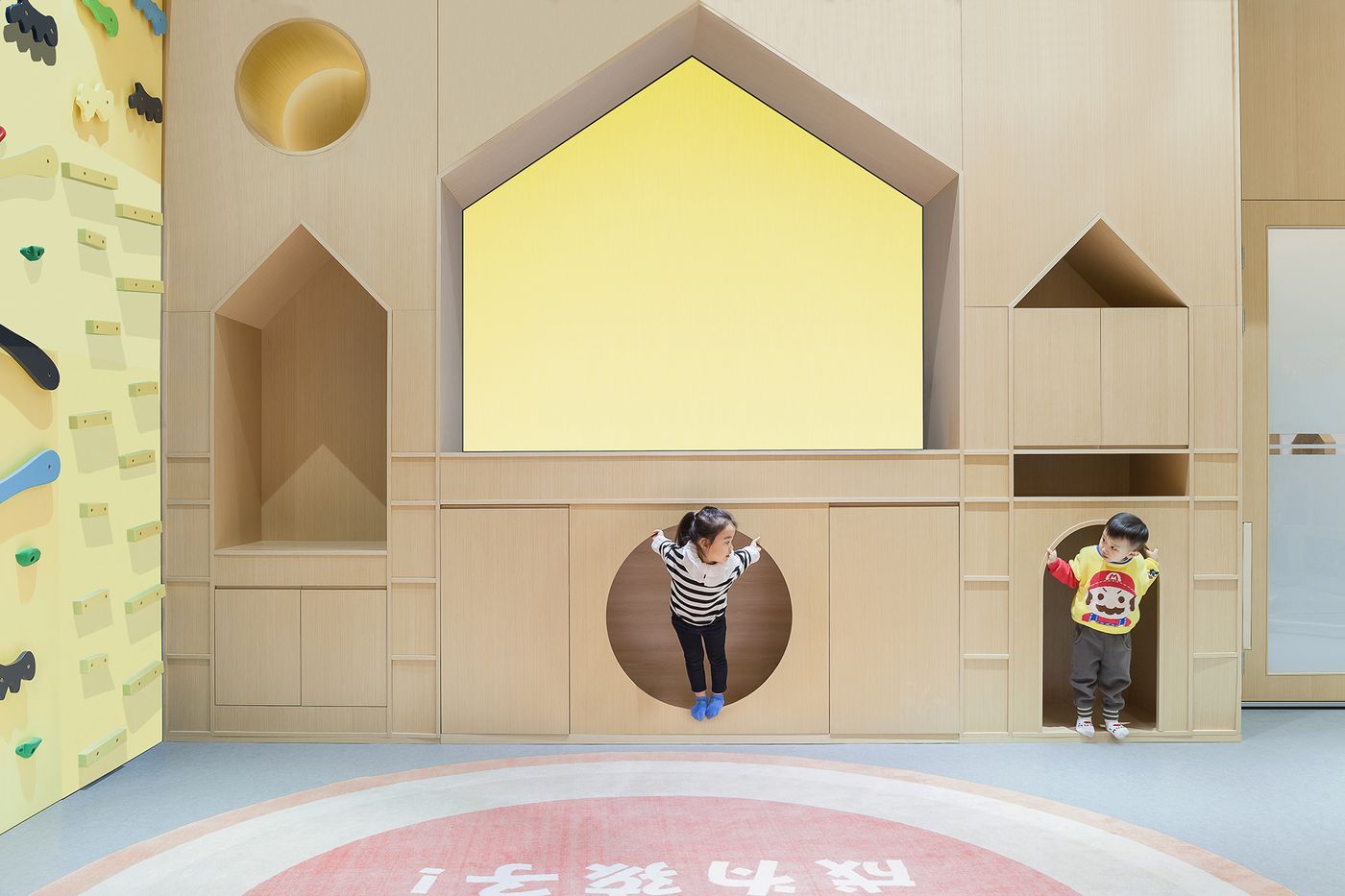
Photo by GL YANG.
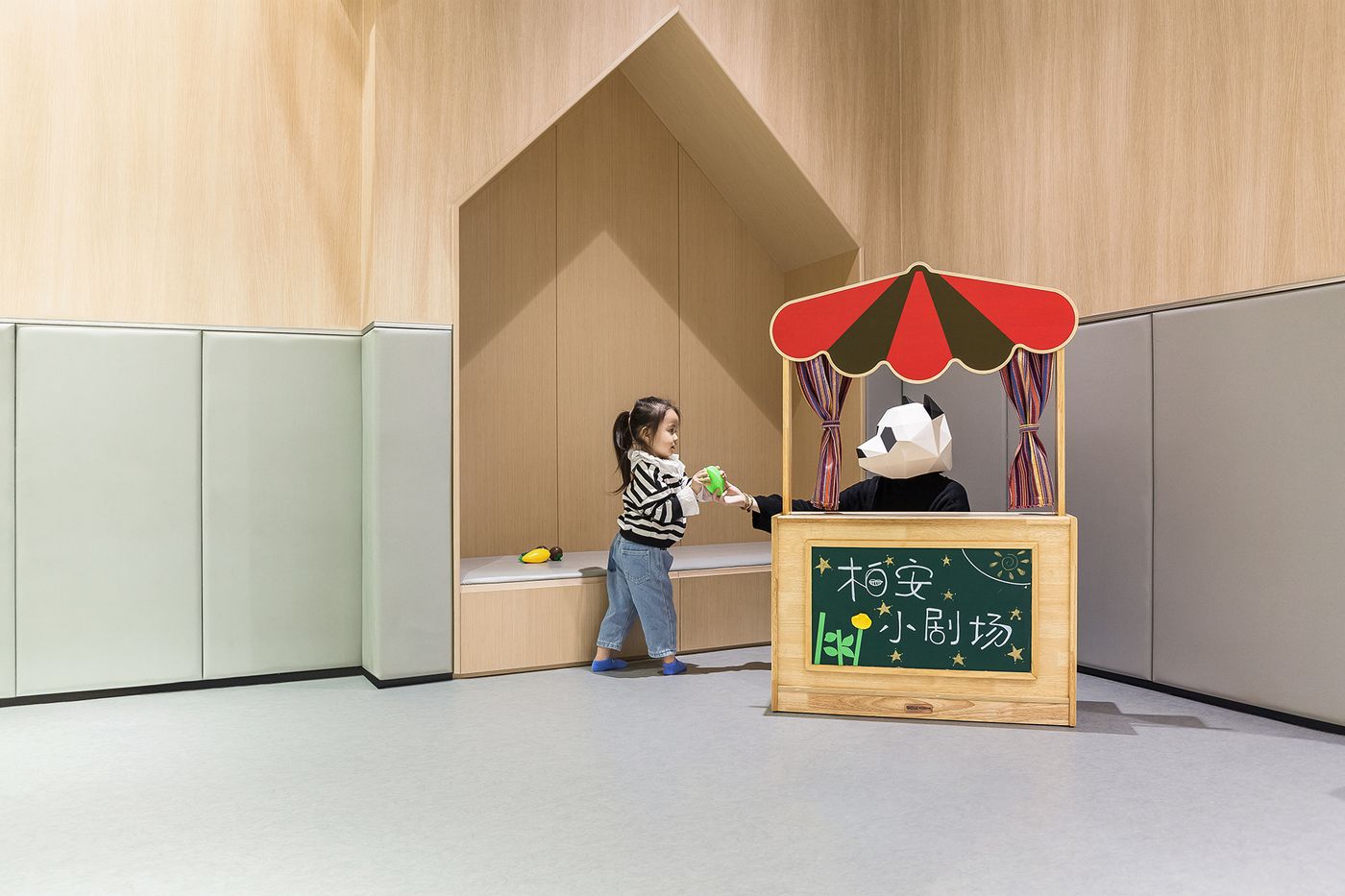
Photo by GL YANG.
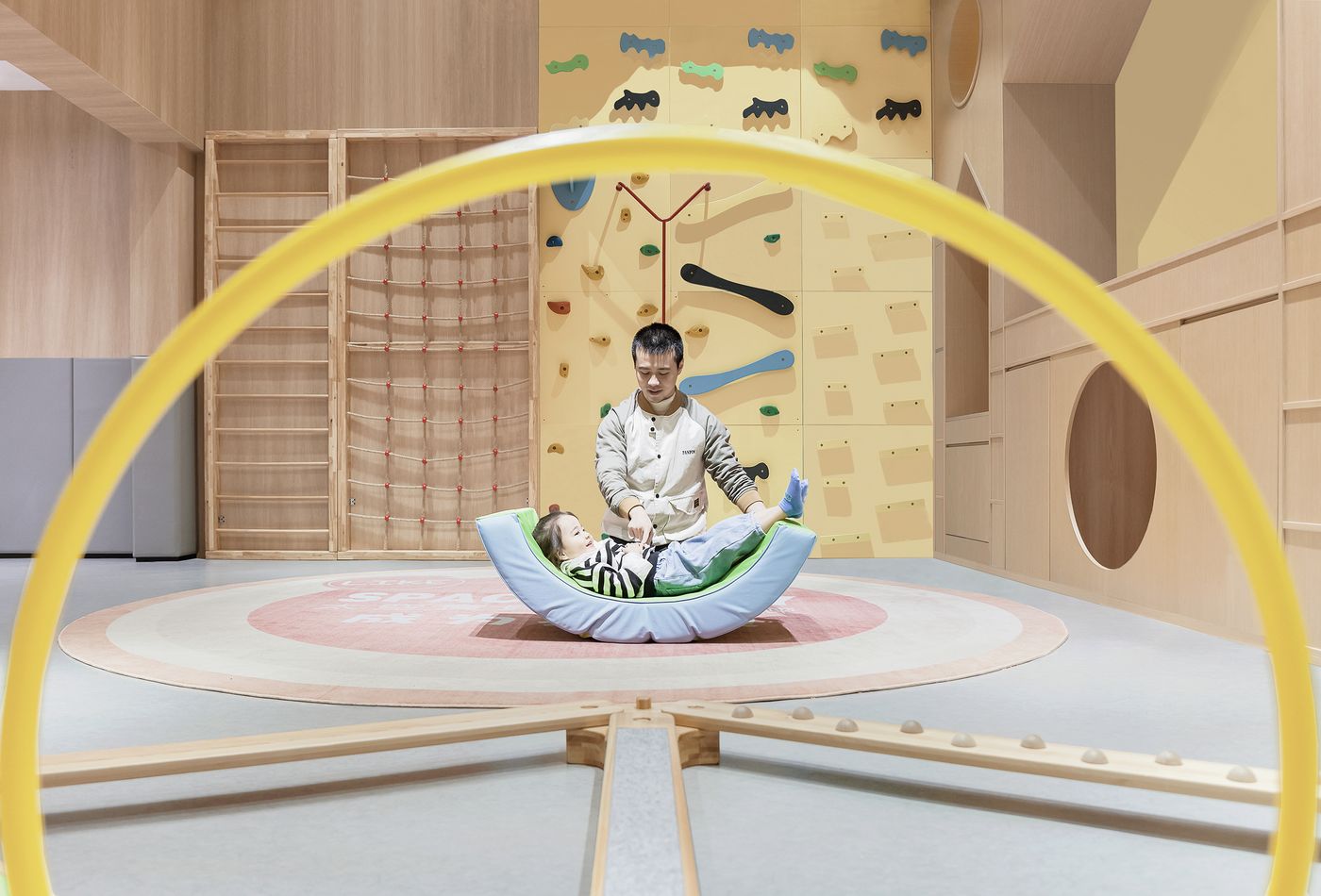
Photo by GL YANG.
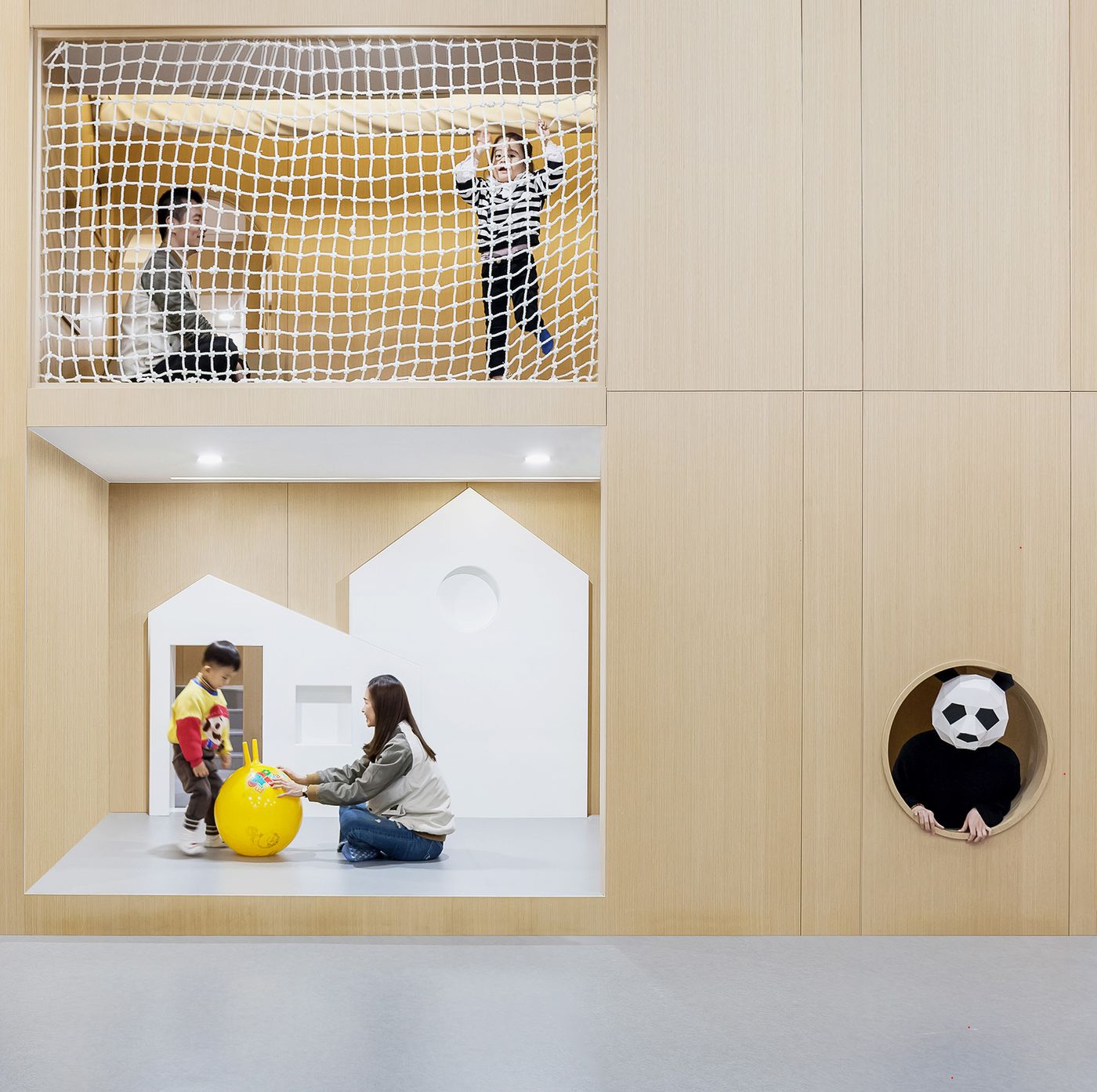
Photo by GL YANG.
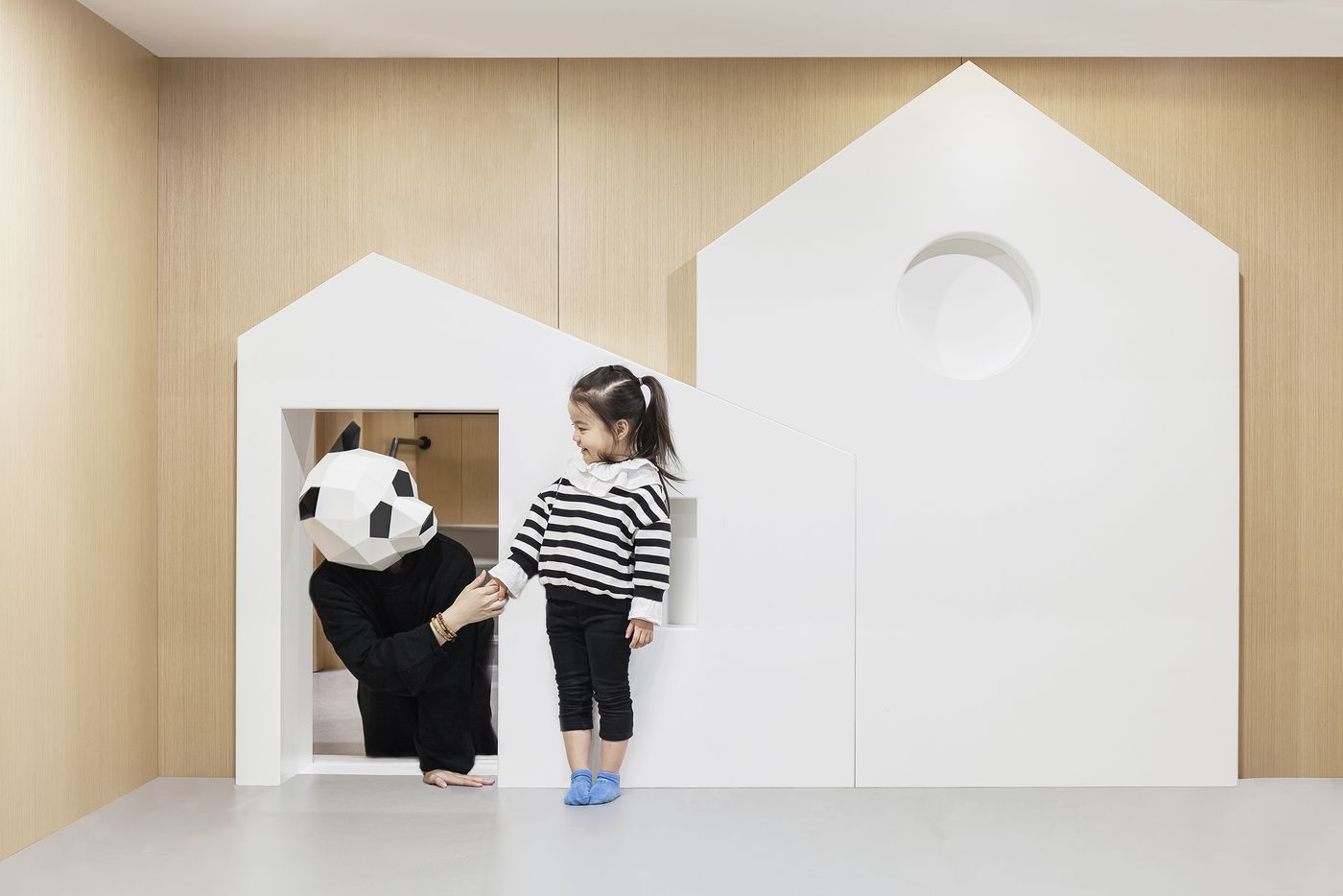
Photo by GL YANG.
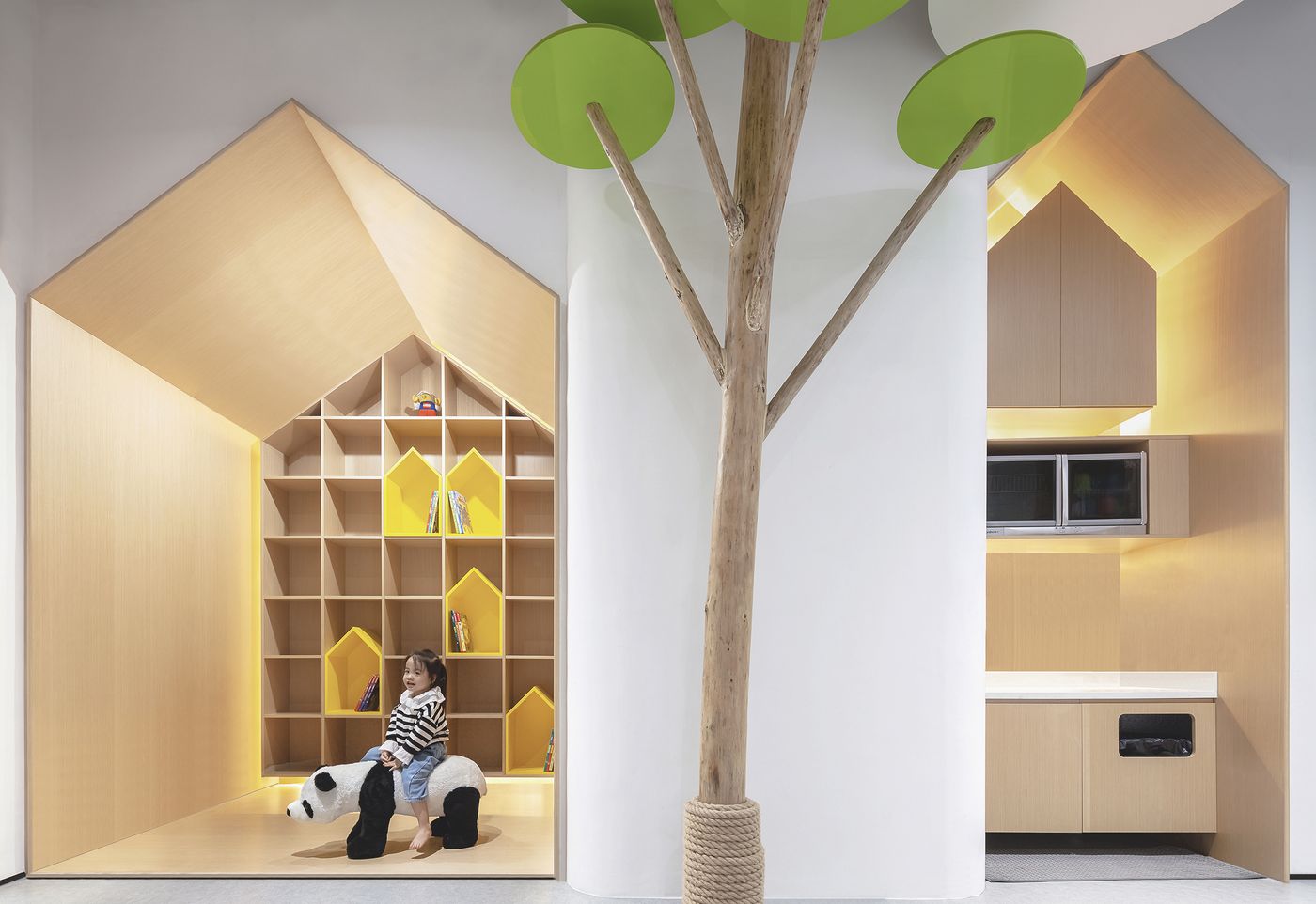
Photo by GL YANG.
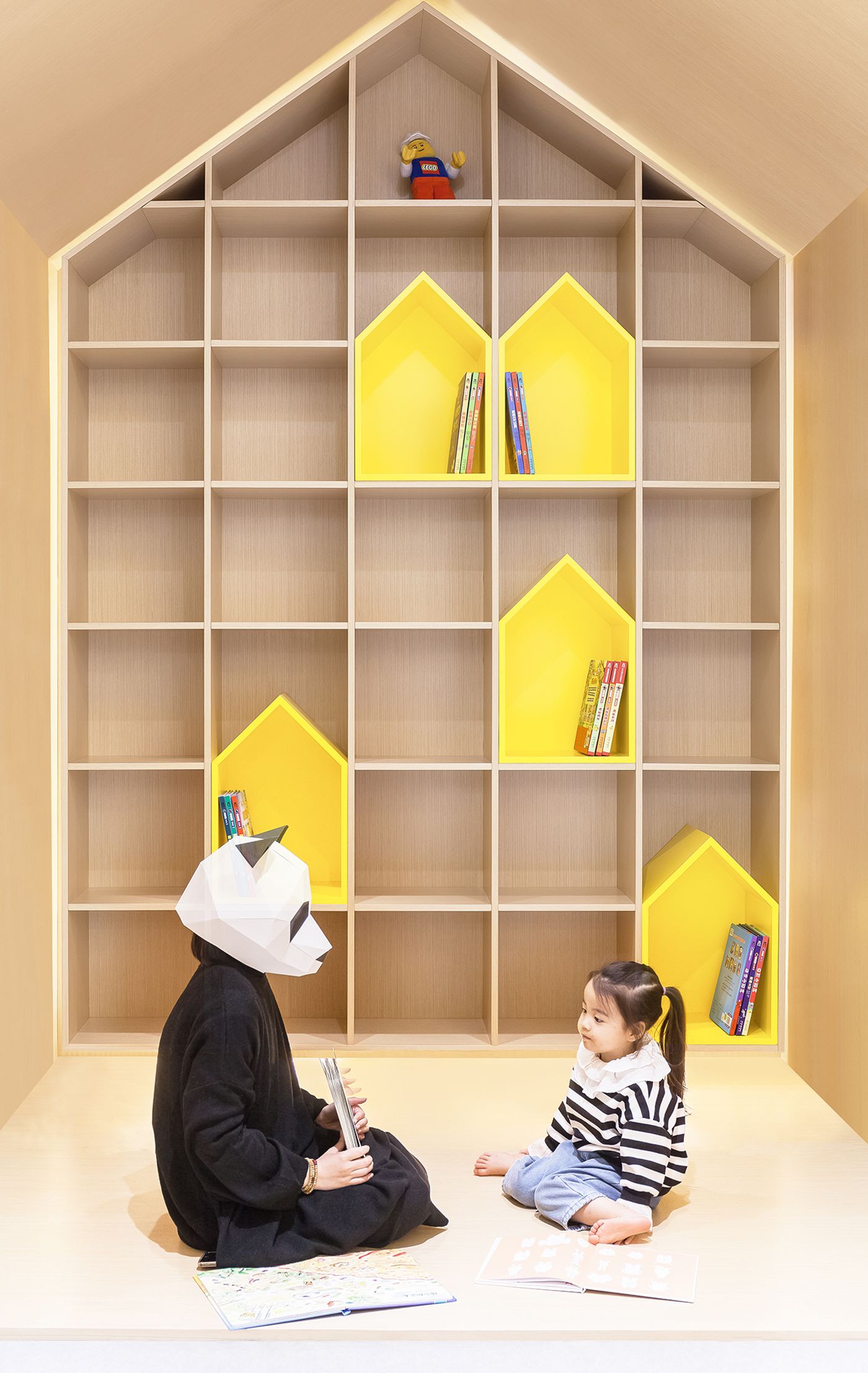
Photo by GL YANG.